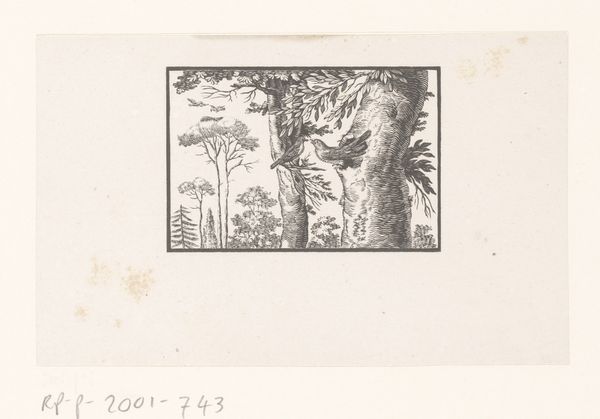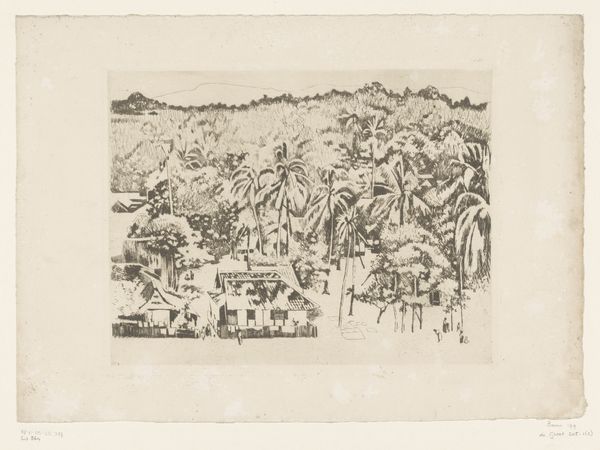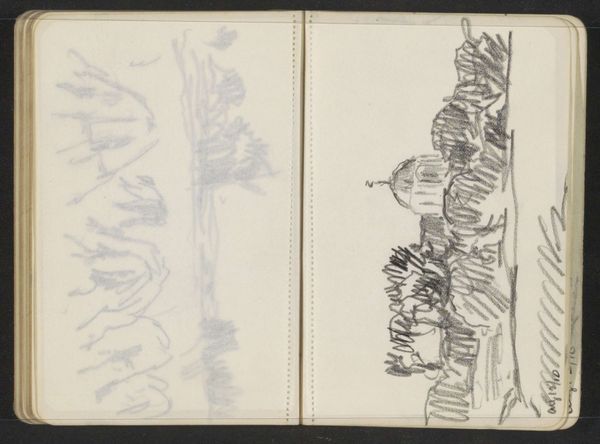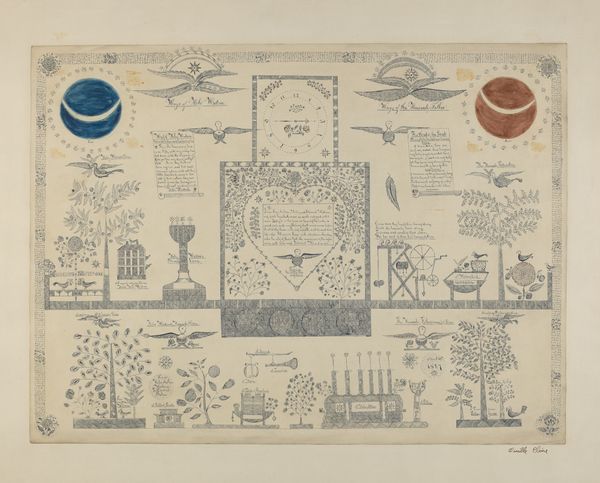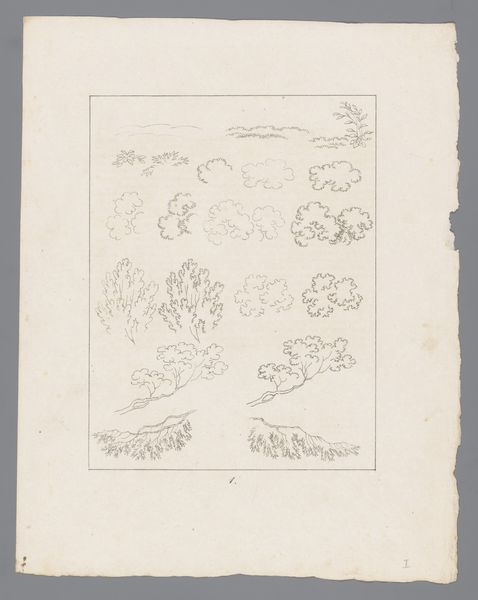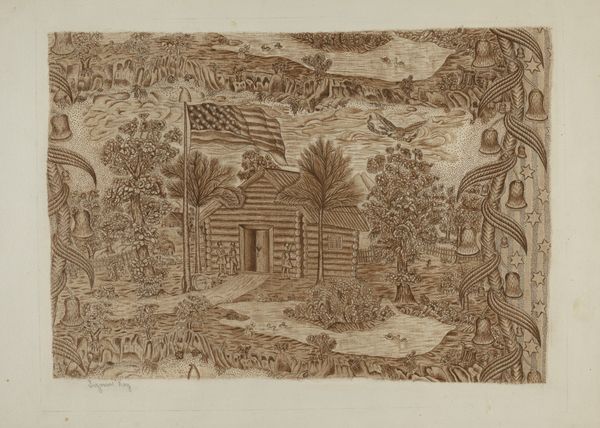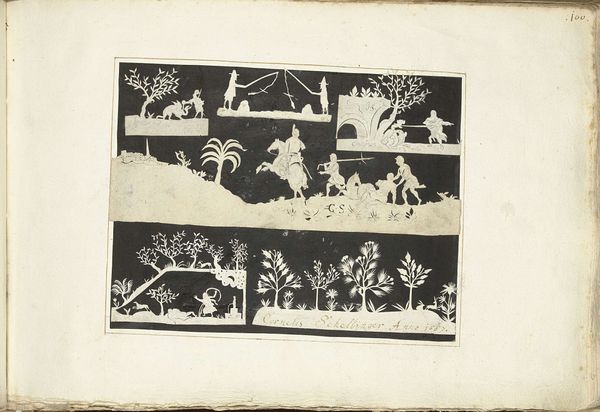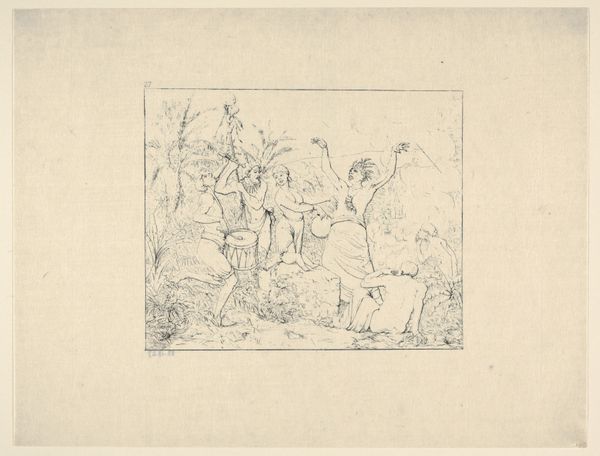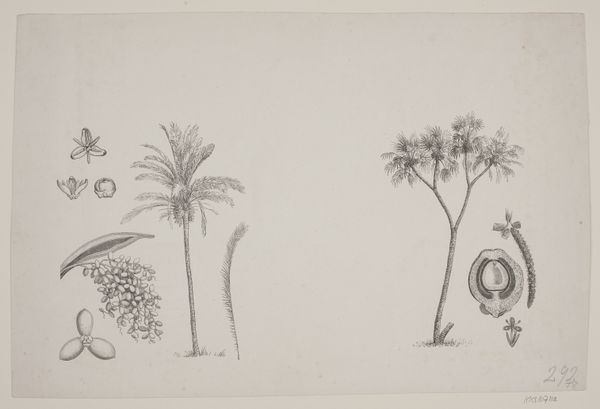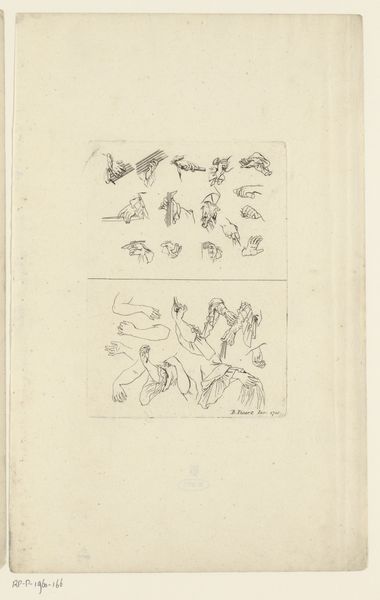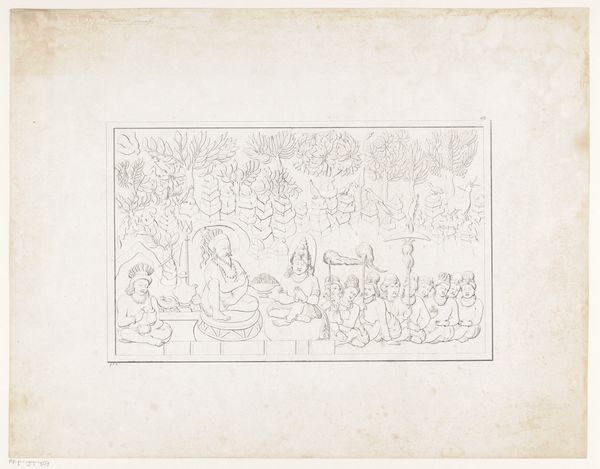
drawing, print, ink, engraving
#
drawing
#
neoclassicism
# print
#
old engraving style
#
landscape
#
ink
#
geometric
#
line
#
academic-art
#
engraving
#
realism
Dimensions: height 184 mm, width 235 mm
Copyright: Rijks Museum: Open Domain
Curator: Welcome. Before us is an engraving from 1774 titled "Encyclopedische voorstelling van planten," created by Johanna Dorothea Sysang. It resides here at the Rijksmuseum. Editor: It’s incredibly detailed, almost clinically so. There's a flat, almost scientific feel, as if dissecting botanical specimens for study, while also hinting at landscape. What was it for? Curator: Likely for scientific documentation or educational purposes, reflecting the encyclopedic ambitions of the Enlightenment. Botanical illustrations like these were crucial for cataloging the natural world and advancing scientific knowledge. We see a clear link to the tradition of natural history. Editor: Right, it’s obviously painstakingly created using ink on either drawing or print with an engraving technique. The sheer number of meticulously rendered plant parts—roots, stems, flowers—must have taken an incredible amount of time and labor. Each little piece contributes to the bigger picture of how botanical knowledge was being built. I am thinking a lot about who this Ms Sysang was and how she learnt her technique. Curator: Absolutely. Her access to resources and the potential patronage she relied upon would shape the final work. Think of the market for botanical prints at the time! Did her background affect what she drew, what materials were at her disposal? Editor: Exactly! And what about the craftspeople involved in preparing the plates, printing the images, and distributing them? These prints circulated widely, and became raw materials in the hands of growers, landowners, physicians, and academics! Curator: Indeed. Sysang's print offers us insight into the intellectual life of its time and reveals connections to burgeoning scientific institutions and a drive for classification. Editor: And to an economy of materials, production processes, labor, and consumer consumption. A neat lens for analyzing the way society was organizing, producing and commodifying its resources through an artist’s lens. Curator: It is fascinating to consider the confluence of all of these contributing elements! Editor: A valuable reminder to investigate both what things represent and what goes into representing.
Comments
No comments
Be the first to comment and join the conversation on the ultimate creative platform.
